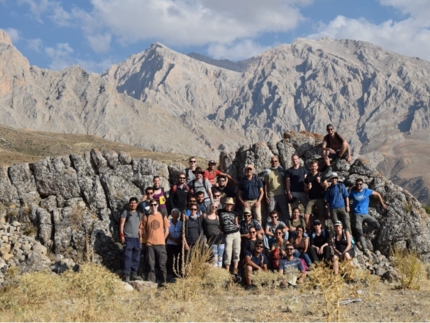Tectonics and Landscape Evolution of the Anatolian Plateau
Manfred Strecker
A thematic field school is organized every two years within the MSc geosciences and is open to participation to all students (although specific knowledge acquired in previous courses may be required). These high-level field schools aim to confront field observations with theoretical models in the geosciences and to allow the students to develop critical thinking with respect to observations and their (sometimes conflicting) interpretations. The geographic and thematic focus of these field schools varies, depending on active research collaborations and funding opportunities; they are meant to be linked to active research within the department and to promote international collaboration.
In recent years, we have organized several thematic field schools in Turkey, in collaboration with Istanbul Technical University, to study the surface uplift, tectonic deformation, and volcanic and landscape-evolution history of the central Anatolian plateau and its margins and have allowed students to observe world-class geomorphological markers of active tectonics. In particular, they focused on: (1) the formation, propagation and seismic hazard associated with the North Anatolian Fault (one of the largest and most active strike-slip faults in the world), as well as its relationship to the uplift history of the Pontide mountains on the northern edge of the Anatolian Plateau; (2) the tectonic, volcanic, environmental and landscape history of the Central Anatolian Plateau; (3) the activity and seismic hazard of the Central Anatolian Fault; and (4) the mechanisms and history of uplift of the southern edge of the Anatolian Plateau, as recorded by the infilling and incision of the sedimentary Mut basin.

